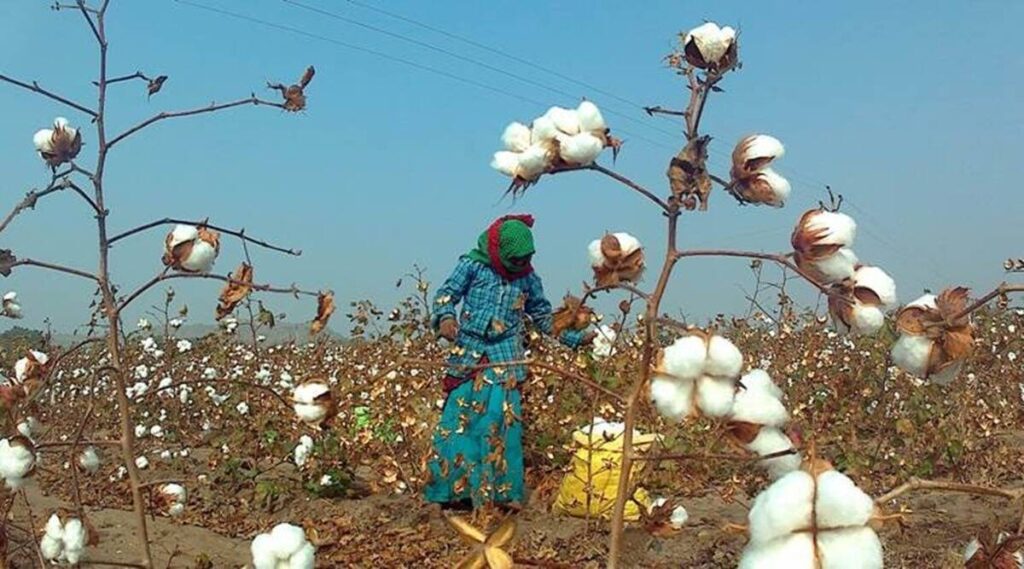Rains, falling prices prompt farmers to shift from pulses to soyabean, cotton

A combination of lower realisations and good monsoon rains have led farmers to move away from pulses and plant more commercial crops, especially soyabean and cotton that are trading much higher than their minimum support prices
According to the Union Agriculture Ministry’s latest compiled data as of July 29, farmers have so far sown 106.18 lakh hectares (lh) area under pulses in the current kharif cropping season from June 1. This is above last year’s corresponding area coverage of 103.23 lh.
However, the picture is different when one looks at individual pulses and state-wise acreages. Arhar/Tur (pigeon-pea), the country’s largest produced kharif pulses crop, has seen a dip in area sown from 41.75 lh to 36.11 lh. This has been compensated for by increases under moong or green gram (from 25.29 to 29.26 lh), urad or black gram (27.94 to 28.01 lh) and other pulses (8.24 to 12.81 lh).
Moreover, the only major pulses-growing states to have registered significant rise in area are Rajasthan (from 21.65 lh to 32.10 lh), Madhya Pradesh (17.83 to 18.28 lh) and Uttar Pradesh (6.22 to 7.08 lh). Others have seen reductions, notably Maharashtra (20.69 to 17.81), Karnataka (18.32 to 16.94 lh), Telangana (4.11 to 2.21 lh), Gujarat (3.80 to 2.86 lh) and Odisha (3.08 to 2.41 lh).
lh) and Telangana (3.43 to 1.88 lh), while rising for moong mainly in Rajasthan (14 to 19.41 lh) and for urad in MP (12.83 to 13.74 lh) and UP (3.46 to 4.55 lh).
There is a clear explanation for the above trend. Arhar is selling at around Rs 7,300 per quintal and soyabean at Rs 6,300 in Maharashtra’s Latur market. Their corresponding MSPs are Rs 6,600 and Rs 4,300 per quintal, respectively. The gap between the ruling market price and MSP is, thus, higher in soyabean.
“In arhar, there is also less price certainty. The actual price that I got during the harvest season was Rs 6,100/quintal, below last year’s MSP of Rs 6,300, whereas my average soyabean realisation was Rs 6,500 and it is unlikely to fall much,” says Rajkumar Bhosale, a farmer from Bombali village in Latur district’s Deoni taluka.
The 45-year-old has, this time, planted arhar only in 5 acres and soyabean on the rest of his total 20-acre holding. Last kharif, he sowed both crops on 10 acres each. “My yields from soyabean are 8-9 quintals per acre, as against 7-8 quintals for arhar. More important, while both are sown in June-July, soyabean is harvested by September-October and arhar only towards December-January. So, I get marginally higher yield even with lower duration in soyabean,” says Bhosale.
Not for nothing then the cumulative all-India acreage under soyabean has gone up from 111.89 lh to 114.69 lh. Maharashtra (43.83 to 45.62 lh), Rajasthan (9.56 to 11.24 lh) and Karnataka (3.78 to 4.08 lh) have posted increases, while dropping slightly in MP (49.76 to 48.76 lh) where farmers have sown more area under urad. Within pulses, the preference has been for moong and urad, as their maturity time is less (60-70 days and 80-90 days, respectively) than that of arhar (160-180 days).
Besides soyabean, pulses have also lost out to cotton, with 117.65 lh being sown under the fibre crop, up from 111.69 lh last year at this time. Maharashtra alone has seen an increase in area from 38.12 lh to 41.21 lh. In Gujarat, cotton has gained acreage (21.77 to 24.50 lh), mainly at the expense of groundnut (18.68 to 16.27 lh).
Ganesh Nanote, a 30-acre farmer from Nimbora village in Telhara taluka of Maharashtra’s Akola district, has planted cotton on 20 acres and soyabean on 10 acres. “Normally, I grow urad on 5 acres. But the losses from unseasonal rains at harvesting time during September in the last two years have made me divert my entire urad area to cotton. And why not, when kapas (raw un-ginned cotton) rates are so high?,” he points out.
Kapas prices in Akola were Rs 7,500/quintal at the start of the harvesting season in October-November, rose to record Rs 12,000 in March and are still at Rs 8,000 levels. “I sold at an average of Rs 9,500. Prices will be good this time, too, and definitely higher than the MSP of Rs 6,080/quintal (for medium-staple varieties),” adds Nanote.
Cotton acreage has also gone up because all the main cotton-growing states – in the South, West and Northwest India – have received surplus rainfall this monsoon season. Being a 6-8 month duration crop, typically harvested over 4-5 pickings till December and right up to February, cotton requires more water than soyabean, groundnut or pulses.
Source – TheIndianExpress